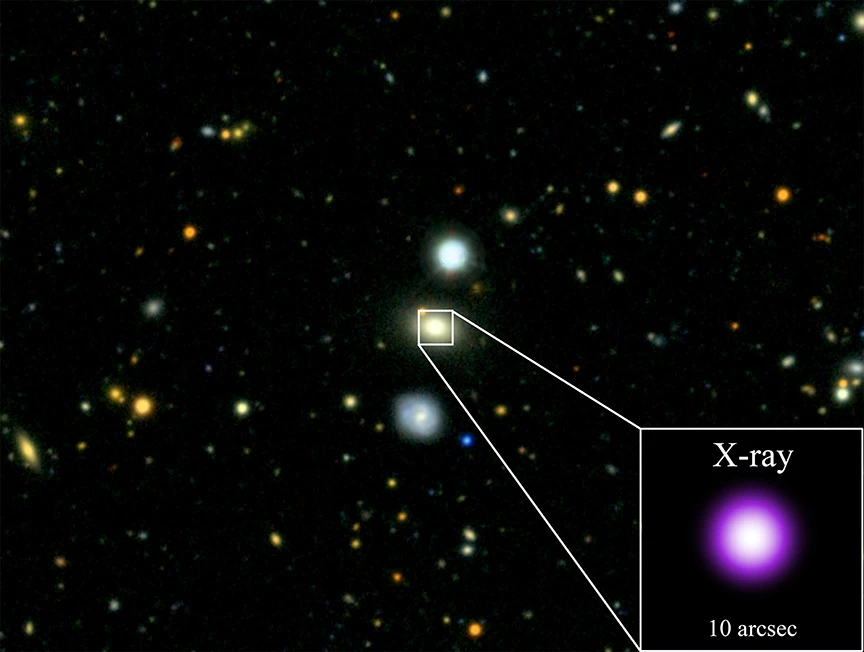Astronomers have watched a supermassive black hole take two bites of a star, and predicted when it might go back for a third. If it does, this should make for an intriguing stellar light show.
Black holes are notoriously messy eaters. When a hapless star wanders too close, the incredibly strong gravitational forces rip it to shreds and throw its guts everywhere, which produces a bright burst of light that telescopes can detect. Astronomers call these tidal disruption events (TDEs).
In 2018, one such signal was detected in a system about 860 million light-years from Earth. X-rays and ultraviolet light flared up bright for around 500 days, before suddenly dimming again. Closer inspection with the NICER, Chandra and XMM-Newton instruments revealed that the brightening was from the star being torn apart, and the fading was assumed to mark the star’s final demise as the black hole slurped up the last of its material – a classic TDE, which was designated AT2018fyk.
But that surprisingly wasn’t the end of the story. Almost two years later, the X-ray and UV light flared back up. The black hole was going back for another bite, suggesting the star survived its first encounter after being just partially eaten. The star seemed to have been flung onto an elliptical orbit around the black hole, which causes it to swing out wide, then dangerously close. The astronomers calculated the star’s path and predicted that the second meal should end in August 2023.
“The telltale sign of this stellar snack ending would be a sudden drop in the X-rays and that’s exactly what we see in our Chandra observations on August 14, 2023,” said Dheeraj Pasham, lead author of the study. “Our data show that in August last year, the black hole was essentially wiping its mouth and pushing back from the table.”

Armed with this new information, the researchers calculated that the star’s eccentric orbit takes it close to the black hole every 1,300 days or so – roughly three and a half years. From this, the team now make a new prediction of when the next flash of light should be visible.
“We think that a third meal by the black hole, if anything is left of the star, will begin between May and August of 2025 and last for almost two years,” said Eric Coughlin, co-author of the study. “This will probably be more of a snack than a full meal because the second meal was smaller than the first, and the star is being whittled away.”
Astronomers will be watching AT2018fyk closely during that time to check if their prediction comes to pass.
The research was published in the Astrophysical Journal Letters.
Source: Chandra




